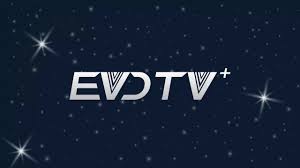Subscription Video on Demand (SVOD) is a popular streaming model that provides subscribers with access to a vast array of on-demand video content. Unlike traditional TV channels, SVOD platforms offer content that viewers can watch anytime, anywhere, without being bound by specific schedules. As advertisers continue to leverage the growing popularity of OTT and connected TV advertising, understanding how SVOD works is essential for targeting the right audiences and maximizing ad performance. This article delves into the workings of SVOD services and how they benefit subscribers.
What Is SVOD?
SVOD (Subscription Video on Demand) refers to a digital service where users pay a recurring fee to access a library of on-demand video content. The content is delivered through over-the-top (OTT) platforms, allowing subscribers to stream TV shows, movies, documentaries, and other types of media without the need for traditional cable or satellite TV. SVOD is typically ad-free or offers a limited number of ads, differentiating it from ad-supported streaming models.
Key Features of SVOD
- On-Demand Viewing: Unlike traditional TV, SVOD platforms allow users to watch shows or movies whenever they want.
- Subscription-Based: Users pay a regular fee, usually monthly or annually, to access content.
- Wide Content Library: SVOD services offer extensive libraries ranging from original content to classic shows and movies.
- Ad-Free or Minimal Ads: Many SVOD services provide an ad-free experience, although some offer ad-supported tiers.
- Multiple Device Support: Subscribers can access SVOD platforms on a range of devices, including smart TVs, smartphones, tablets, and computers.
How Does SVOD Work for Subscribers?
SVOD services provide a simple and flexible streaming experience that appeals to users looking for convenience and control over their entertainment choices. Here’s a closer look at how SVOD works for subscribers:
1. Subscription Plans
SVOD platforms typically offer multiple subscription tiers, each with varying levels of access and benefits. Some of the most common subscription models include:
- Standard Monthly Subscription: The most common plan, where subscribers pay a fixed amount each month.
- Annual Subscription: An option for users who prefer to pay upfront for a year of service, often at a discounted rate.
- Ad-Supported Tiers: Some platforms offer lower-cost plans with limited advertisements in exchange for a reduced subscription fee.
The pricing structure for SVOD services may vary depending on the platform and the content offered. For example, premium services like HBO Max may cost more than a service offering a library of older movies and TV shows.
Read more : Common Myths About Osteoporosis Debunked
2. Content Library and Access
Subscribers can access a wide variety of content depending on their chosen service. The content library typically includes:
- Original Shows and Movies: Exclusive content produced by the platform itself (e.g., Netflix Originals, Amazon Prime Video’s exclusive films).
- Third-Party Content: A collection of TV shows, movies, and documentaries from various production companies and studios.
- Live Events: Some SVOD platforms, like Apple TV+ or Amazon Prime Video, may offer live events such as sports or concerts.
With an SVOD subscription, users can stream as much content as they want, without restrictions, and often on multiple devices at once.
3. Flexibility and Control
SVOD services provide greater flexibility and control compared to traditional TV subscriptions. Subscribers can:
- Watch Content on Demand: There’s no need to follow a specific TV schedule. Users can start, pause, or resume content at their convenience.
- Download for Offline Viewing: Many SVOD platforms allow subscribers to download content and watch it without an internet connection.
- Create Multiple User Profiles: Some platforms let subscribers create different profiles for family members, allowing each person to have personalized content recommendations.
4. Ad-Free or Limited Ads
One of the most significant selling points of SVOD services is the absence of commercials. For example, platforms like Netflix, Amazon Prime Video, and Disney+ offer a largely ad-free experience, enhancing user satisfaction. However, some SVOD services, such as Hulu, have introduced advertising-supported options to offer lower-cost subscription plans.
While subscribers can choose to avoid ads by paying for a premium subscription, the ad-supported models often provide value for budget-conscious viewers who are willing to accept some interruptions in exchange for a reduced monthly fee.
5. Multi-Device Streaming
SVOD platforms enable subscribers to access content on a wide range of devices, including:
- Smart TVs
- Streaming Devices (e.g., Roku, Apple TV, Amazon Fire Stick)
- Laptops and Desktops
- Mobile Devices (e.g., iPhone, Android phones, tablets)
This flexibility allows users to enjoy content on-the-go or in the comfort of their home. Multi-device support is particularly valuable for connected TV advertising, which enables brands to target consumers based on their content consumption habits across different devices.
Benefits of SVOD for Subscribers
SVOD services offer numerous benefits that make them an attractive option for viewers:
1. Convenience and Accessibility
SVOD services provide the ultimate convenience by allowing subscribers to watch content anywhere, at any time. With the rise of mobile devices and smart TVs, consumers can easily access their favorite shows and movies without being tied to traditional TV schedules.
2. A Wide Range of Content
With an SVOD subscription, viewers gain access to an extensive library of content, often including exclusive or original series that are only available on that platform. The diverse selection ensures that there is something for everyone, whether it’s the latest blockbuster or a classic movie.
3. Customization and Personalization
SVOD platforms use algorithms to recommend content based on viewing history, preferences, and ratings. Subscribers can enjoy a personalized experience where the content selection continuously adapts to their interests.
4. No Contracts or Commitments
Most SVOD services don’t require long-term contracts, offering subscribers the freedom to cancel their subscription at any time. This flexibility allows users to try out different services without the fear of being locked into a long-term commitment.
5. Cost-Effective Alternative to Cable TV
SVOD offers a more affordable alternative to cable or satellite TV, especially when combined with the lack of hidden fees or long-term commitments. By eliminating the need for expensive hardware or installation fees, SVOD services allow users to enjoy high-quality entertainment at a lower cost.
The Role of SVOD in Digital Advertising
As the demand for streaming services continues to rise, digital marketing professionals are increasingly looking to SVOD platforms as a valuable advertising channel. Understanding how SVOD works can help advertisers make more informed decisions about where to place their ads and how to target specific audiences effectively.
1. Connected TV Advertising
Connected TV (CTV) advertising refers to the delivery of digital ads to users who are streaming content on smart TVs or other connected devices. SVOD services are a key component of the CTV advertising landscape, offering advertisers the ability to target specific demographics based on their content consumption habits.
With the rise of SVOD services, connected TV advertising has gained significant traction. Advertisers can leverage data-driven insights to target audiences based on their interests, viewing behavior, and other characteristics, ensuring that ads are more relevant and engaging.
2. OTT Advertising
Over-the-top (OTT) advertising refers to advertising delivered through streaming services that bypass traditional cable or satellite TV networks. SVOD services are a part of the OTT ecosystem, and advertisers can reach viewers with highly targeted ads during streaming content.
Because OTT advertising is often more cost-effective and offers better targeting options compared to traditional TV advertising, many advertisers are shifting their budgets to these platforms.
3. Programmatic Advertising
SVOD platforms often support programmatic advertising, which uses automated technology to buy and place digital ads based on audience data. Through programmatic advertising, advertisers can optimize ad placements in real-time, ensuring they reach the right audience at the right moment.
By leveraging programmatic advertising, SVOD services enable advertisers to improve ad targeting accuracy, performance, and efficiency.
Conclusion
SVOD services have revolutionized the way people consume media, providing flexibility, convenience, and personalization. For advertisers, these platforms represent a prime opportunity to reach audiences in a highly targeted and cost-effective manner. Understanding how SVOD works and what is SVOD is crucial for maximizing the effectiveness of connected TV advertising and other digital marketing strategies. As more consumers turn to SVOD for their entertainment needs, the role of advertisers in the SVOD ecosystem will continue to evolve, driving new opportunities for engagement and revenue generation.



